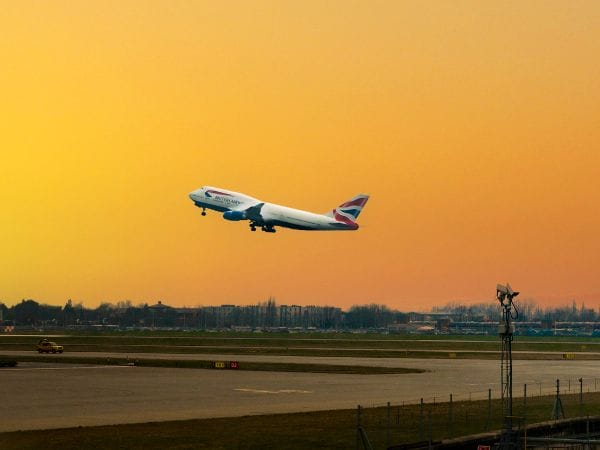In congested airspaces, Air Navigation Service Providers (ANSPs) have several frameworks which help to manage the air traffic flow across a country or region.
European airspace is a primary example of a region that encounters heavily congested traffic conditions.
Due to the complexity of European airspace consisting of over 25 individual ANSPs, a set of frameworks and procedures were required to provide protocols to the region as a whole.
Established in 1963, Eurocontrol was established to support the Air Traffic activities throughout Europe.
It has developed and implemented procedures in the region to assist in managing air traffic flow and patterns.
What is Calculated Take Off Time (CTOT)?

Abbreviated most commonly as CTOT, the Calculated Take-off Time is a time given to commercial aircraft prior to departure in Europe.
The issuing of a CTOT depends on several factors, the major one being the amount of congestion present in the airspace the aircraft will be routed through.
Another factor would be a technical error in controlled airspace, reducing capacity, or active industrial action in a sector of airspace which the aircraft will pass through en route.
The CTOT allows for a margin of advance and delays in actual aircraft departure time. This margin has been set to -5 minutes CTOT to +10 minutes CTOT. This provides a 15-minute window.
The issuing of a CTOT is processed through the Central Flow Management Unit (CFMU), a system that monitors and analyses the complete flight route filed.
This analysis includes identifying the congestion of each sector of airspace at the time in which the aircraft will be due to pass through.
This algorithm then processes an optimal departure time (CTOT) for the aircraft. This CTOT intends to minimize the air traffic on the en-route sectors of a flight.
This smooth traffic flow management has been setup to enhance safety and reduce human factors-related errors in regard to ATC personnel.
In the event of a requirement for CTOT to be assigned, a Eurocontrol Slot Message will be issued upon the filing of an IFR flight plan.
During the taxi and takeoff phase, aircraft require to be released under the issued CTOT in order to depart.
The CTOT must also align with the airport slot, if the aircraft is operating from a slot-controlled airport.
Eurocontrol Slot Messages
A Eurocontrol slot message is a notification issued to the flight crew and ATC personnel via a Slot Allocation Message (SAM). A SAM will consist of an indication informing the flight of the requirement for a CTOT, followed by an assigned taxi and takeoff time.
A SAM will be issued at 2 hours minimum to the set Estimated Off-Block Time (EOBT).
Any amendment to this issued CTOT will be conveyed via an SRM – a Slot Revision Message.
TOBT and TSAT
The issuing of a CTOT takes into consideration the various time periods that a commercial flight follows.
Similar to an EOBT, a Target Off-Block Time (TOBT) is the target time in which an aircraft has its doors closed, ready for pushback and startup.
A Target Start-up Approval Time (TSAT) is a follow-up to TOBT in that it is the intended time in which an aircraft begins its engine startup process.
CTOT Exemptions
Despite the statutory compliance for accepting and adhering to issued CTOT, there are exemptions to these requirements. Some of these include:
-Medical Evacuation (Medevac):
Flights operating repatriation or emergency flights that are deemed to be critical to those onboard are exempt from the CTOT system. Flight plans filed for operations under these conditions are permitted to select their departure times.
This can be on an ad-hoc basis due to the nature of these operations.
-General Aviation or VFR Operations:
Aircraft operating under Visual Flight Rules (VFR) or in which their operations pertain to General Aviation (GA) activities are also exempt from the CTOT system.
This is primarily due to the domestic or localized nature of such flights; in which multiple regions or international airspace is generally not flown through.
GA and VFR operations are also undertaken at lower flight levels which commercial traffic generally doesn’t operate at for a continuous period.
–Military
Similar to the majority of aviation regulations and procedures, military aircraft are not required to adhere to CTOT procedures. Similar to the ad-hoc basis of Medevac operations, military aircraft operate when needed; there is no fixed or scheduled set for their operations.
Read More:
Unmonitored NAVAID – What Does It Mean?
Time of Useful Consciousness (TUC) | Aviation Glossary

After visiting more than 60 countries, I have probably been on every type of plane there is and visited countless airports. I did my very first international solo trip to South Africa at the age of only 16 and haven’t really stopped traveling since.
Despite the adventurous travel itch, I do have a nerdy side as well – which is satisfied by writing about all things aviation “too boring” for my regular travel blog.
